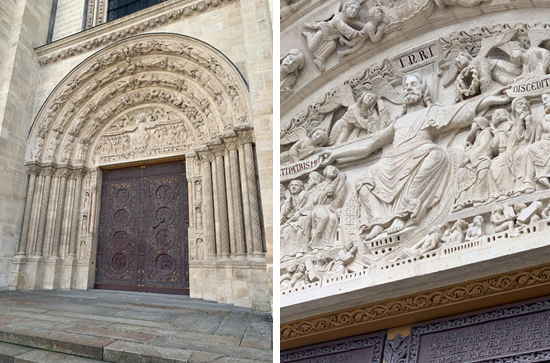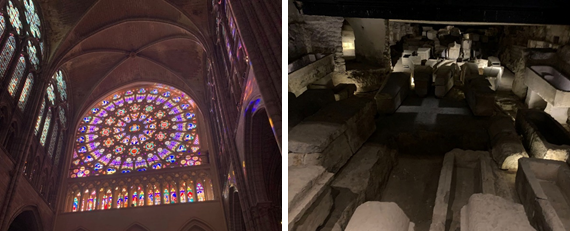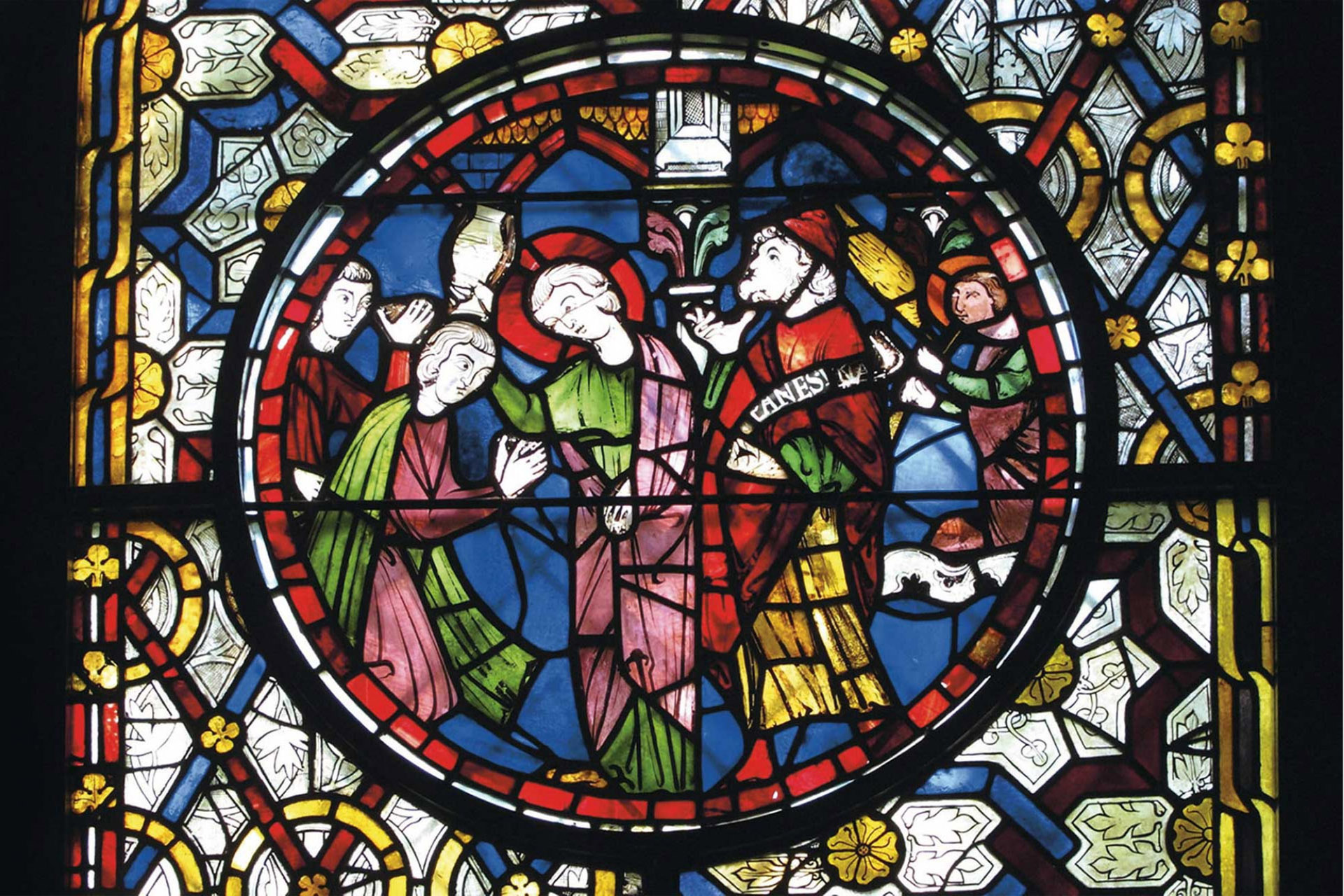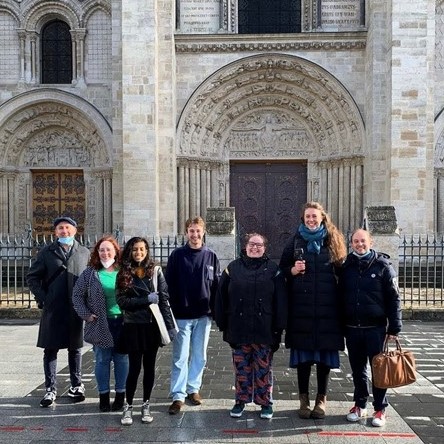The Centre for Medieval and Early Modern Studies (MEMS) offers its MA students the unique opportunity to study in both Canterbury AND Paris. Some of optional modules, including ‘Gothic Architecture,’ are taught across both sites – the Gothic style emerged in Paris around the mid-twelfth century and continued to develop in Canterbury.
Dr Emily Guerry, module convenor of ‘Gothic Architecture’, is using a Go Pro to help with the delivery of her seminars this term. Due to ongoing public health concerns, the use of a Go Pro enables her to simultaneously live-stream all Gothic site visits for hybrid teaching. This method allows the Gothic field trips to be accessible if anyone needs to shield.
On Monday 31 January, the Gothic MA students enjoyed their first field trip to the basilica of Saint-Denis, built from 1137–1144 under the aegis of Abbot Suger (d.1151). Six staff and students joined in-person and six joined virtually for this exciting examination of the ‘first’ Gothic project.
Lou Docherty, a MA student based in Paris, reports on the experience of visiting this “Gothic masterpiece” in the late January sunshine:

“We began outside Abbot Suger’s magnificent tripartite doors which, while imposing today, would have originally been made of bronze. The façade of the Basilica had recently been cleaned, giving us the amazing opportunity to see it as it would have been when Abbot Suger oversaw the creation of this Gothic masterpiece in the 12th Century. The central tympanum depicts the Last Judgment, with Christ enthroned in Heaven while bodies resurrect from their graves on the lintel below.
“I particularly enjoyed seeing the image of the resurrection of Suger, the patron, positioned in the lintel as the first to be resurrected (and as the closest to Christ’s nail-wounded foot), alongside an inscription in Latin that calls for his plea to be “numbered among [Christ’s] sheep.

“Walking into the church and through the nave, one of my favourite encounters of the day was the sight of the rose windows in the north and south transepts, which have been beautifully restored since 2015 and looked radiant thanks to the winter sunshine! I also enjoyed walking around the Merovingian crypt of the Basilique, where we saw a sea of sarcophagi that once surrounded the martyrium of Saint Denis, the patron saint of the kings of France.

“We then explored the other major Gothic initiative led by Abbot Suger: The rib-vaulted chevet in the east end, which would have surrounded the new location for the Gothic shrine of Saint Denis. By bringing the martyr’s relics out of the darkness of the crypt and into the light of a new Gothic choir, it glorified the devotional experience. This translatio, according to Suger in his writings On the Administration of the abbey in his time, also accommodated health and safety concerns; he explained that feast days, the small crypt would be so crowded that women would be run on top of men’s heads in attempt to see and touch the sacred relics of Saint Denis.
“Suger’s chevet has elements that typify Gothic architecture, with long, inter-connected, spider-like ribs that lift the weight of the walls and allow for colourful stained glass to fill the surrounding vertical space. In one of the windows, showing the earliest-known representation of the Tree of Jesse in glass, Abbot Suger (once again!) inserted himself into the sacred scene. He appears in the lower right-hand corner of the lancet, holding a miniature version of this very window.

“Finally, as a lover of royal history, it was amazing to see so many tombs of French kings and queens as Saint-Denis served as the royal necropolis seventh until the nineteenth centuries. The early modern transi cadaver tombs of Henri II and Catherine de Medici and Louis XII and Anne of Brittany were thrilling to see in person. Life-like effigies of their decaying, naked bodies lie in state below idealised statues of the pairs of rulers at prayer, facing the shrine of Saint Denis.
“Overall, it was an enriching visit lead by Dr Guerry, who made the whole tour interesting and even funny in places. If you have the opportunity to visit the Basilique de Saint-Denis I highly recommend it, not just for the history but also for the beauty.”

